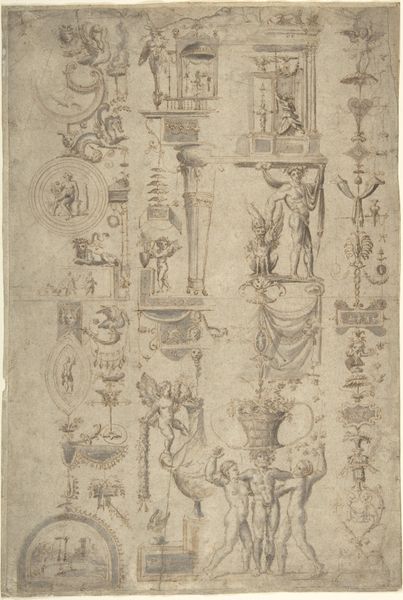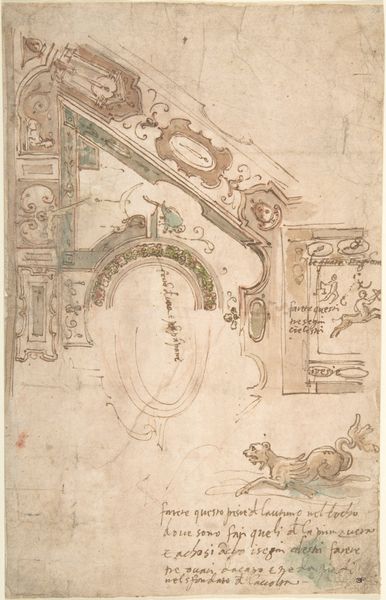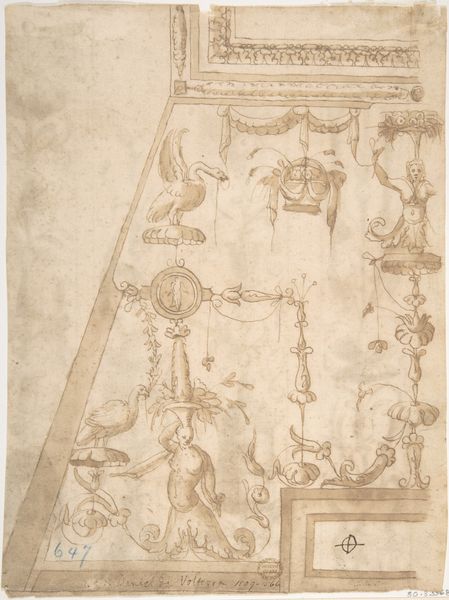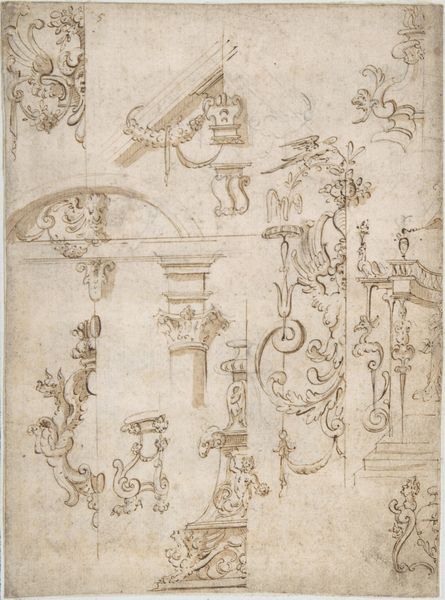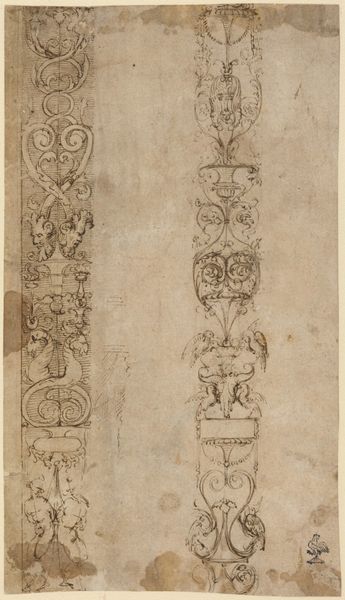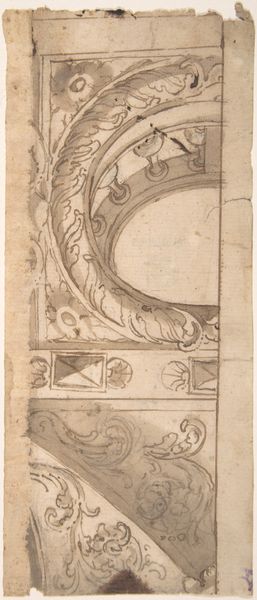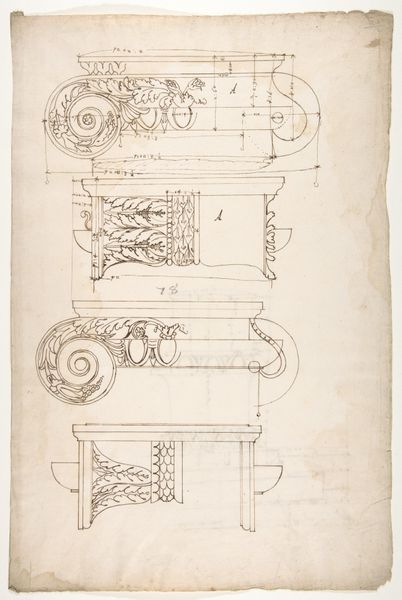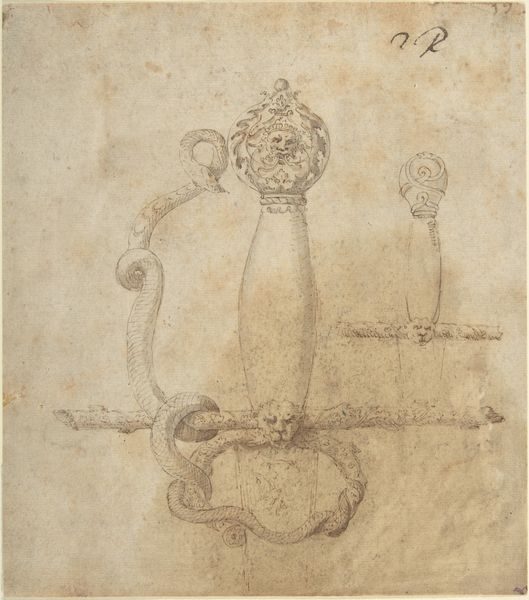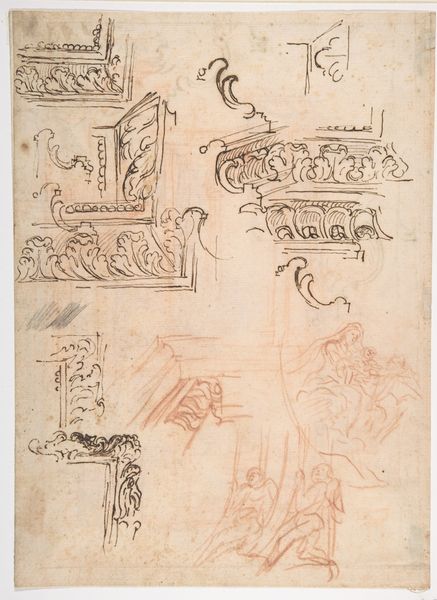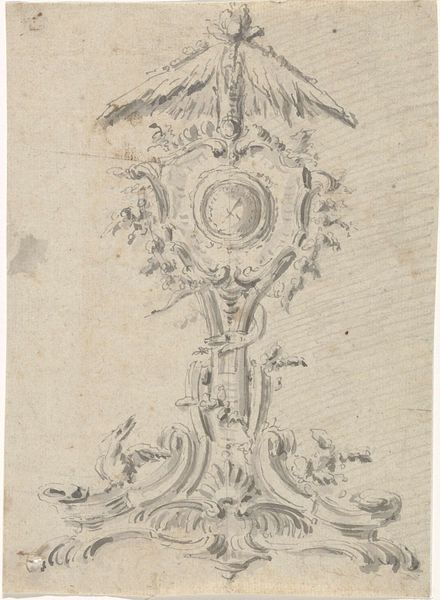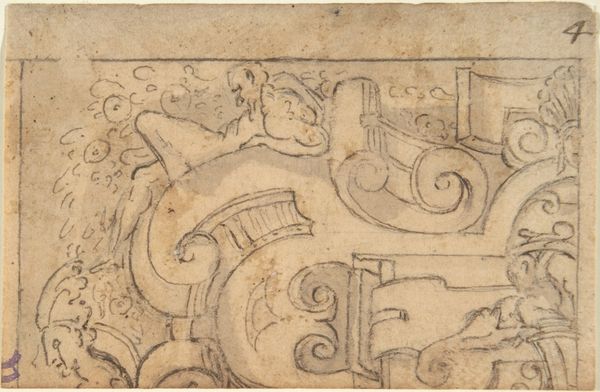
Composite capital, plan, elevation, and details; frieze, detail (recto) Forum of Nerva, entablature and attic, profiles; portico, perspective, and cornice, profile (verso) 1500 - 1560
0:00
0:00
drawing, print, ink, architecture
#
drawing
# print
#
11_renaissance
#
ink
#
geometric
#
architecture
Dimensions: sheet: 16 15/16 x 10 7/8 in. (43 x 27.7 cm)
Copyright: Public Domain
Editor: Here we have a drawing from the Renaissance, around 1500-1560, depicting architectural elements – capitals, friezes, and a portico, potentially designs for the Forum of Nerva, created anonymously in ink. The detail is really striking, almost obsessively precise. How would you interpret the social significance of these architectural drawings? Curator: This drawing reflects the revival of classical ideals during the Renaissance and the meticulous study of ancient Roman architecture. But let's consider what such detailed drawings represent institutionally. Were they merely academic exercises or potential blueprints for new constructions? Who had access to these designs, and how did this shape architectural trends and even public perceptions of power? Editor: That's fascinating! I hadn't considered the access limitations. Did these kinds of drawings influence the image of civic power in the Renaissance? Curator: Absolutely. Think about how the display of classical elements in architecture, like the Composite capitals we see here, resonated with audiences familiar with the grandeur of Rome. It wasn't simply about aesthetics; it was about legitimizing authority, connecting rulers and institutions with a glorious past. Consider the symbolic value loaded into that spiral on the composite capitals. Editor: So the drawing itself becomes a tool for shaping a particular political narrative? Curator: Precisely! Drawings like these weren't just about representing forms. They played an active role in constructing and disseminating ideas about history, power, and the relationship between the two. What do you think about this drawing after that explanation? Editor: It's amazing to realize this wasn't just an objective study but a statement. I'll never look at Renaissance architectural drawings the same way again! Curator: And that’s the key – to recognize the layers of meaning embedded within seemingly straightforward images. There's more than meets the eye!
Comments
No comments
Be the first to comment and join the conversation on the ultimate creative platform.
